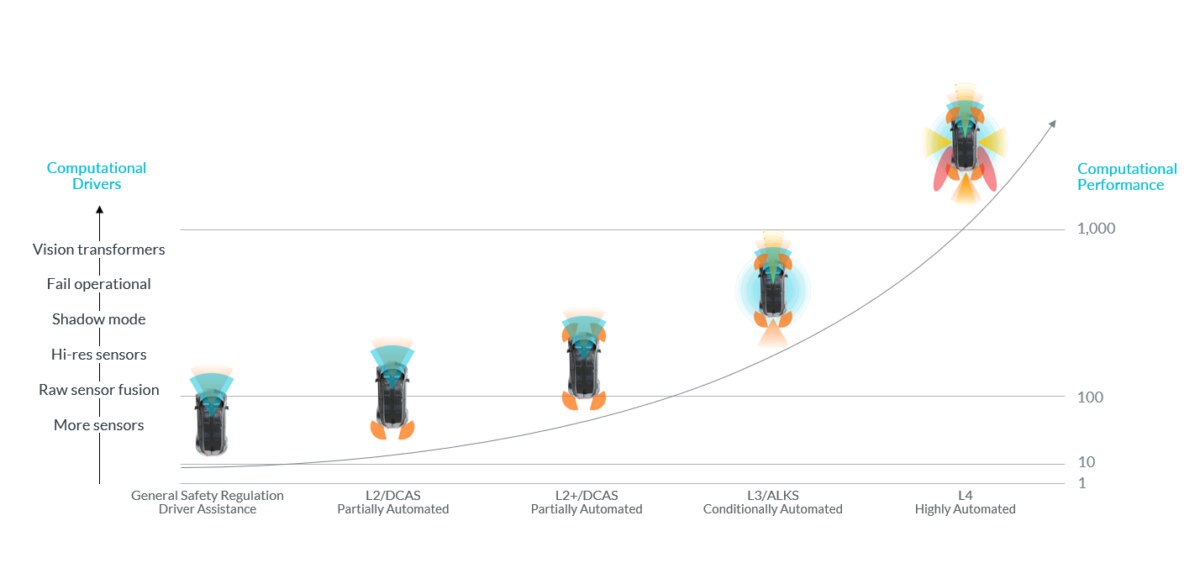Accelerating ADAS Adoption: How Arm is Transforming the Driving Experience

Driver assistance features are increasingly becoming an extension of the driver’s senses. They use cameras, radars, and other sensors to detect potential hazards, warn drivers, take corrective action, and even provide sustained control of the vehicle under the driver’s responsibility. These innovative automotive technologies, known as Advanced Driver Assistance Systems (ADAS), can not only enhance the driver experience but also overall safety for all road users.
Despite getting less media attention than automated driving features, such as level 2 DCAS (Driver Control Assistance Systems) and level 3 ALKS (Automated Lane Keeping Systems), driver assistance and active safety features have a key role to play in every future vehicle. Through a combination of various features, such as forward collision prevention, lane keeping assist, and pedestrian automatic emergency braking, ADAS can help reduce on-road fatalities significantly.
In the U.S. alone, for instance, it is estimated that these technologies have the potential to prevent around 21,000 fatalities per year. It is no coincidence that regulators and transport safety bodies, such as the European Commission and the NHTSA (National Highway Traffic Safety Administration) in the U.S., have taken steps to accelerate the deployment of certain active safety technologies in recent years.
On top of that, shifting preferences towards convenience and safety among consumers have augmented the demand for state-of-the-art technologies in vehicles. Now as these driver assistance features become more prevalent across software-defined vehicles (SDVs), vehicle manufacturers (OEMs) are facing pressures to ensure the widespread deployment of ADAS active safety features in vehicles.
Check this link to learn how Arm is leading the software-defined vehicle revolution
The challenges behind ADAS feature adoption
The reality, however, is that the worldwide deployment of certain active safety features is still relatively low. This is largely influenced by the following technical and economic challenges:
- Lack of platform scalability: Traditional fragmented electronics architectures, such as distributed electronic control units (ECUs), are no longer viable for SDVs. OEMs now need scalable platforms across premium and volume car segments that protect software investments and enable post-production monetization.
- Software complexity: The integration of ADAS into existing vehicle architecture requires complex software coordination. By 2030, ADAS and automated driving (AD) will account for 51% of in-vehicle software development costs, representing over USD 40 billion annually. Current inefficiencies during integration, testing, and validation across system variants contribute significantly to these costs.
- Legacy organizational practices: OEMs face challenges transitioning from hardware-focused Bill-of-Materials (BOM) to software-defined business models. Domain-siloing and inadequate analysis of software and semiconductor investments across vehicle platforms lead to inefficient tactical decisions when long-term strategic decisions are necessary.
- Global standards and regulations: Different regions and nations have different safety standards and regulations that need to be met by ADAS technologies. A future-proofed scalable ADAS platform allows for more agility to respond to new requirements while offering longer lifecycles.
How Arm is addressing the challenges for future OEMs?
Through our transformative automotive technologies and industry-leading software ecosystem, Arm is at the forefront of delivering scalable, efficient, and innovative solutions for ADAS and Automated Driving Systems (ADS). In March 2024, Arm and our ecosystem unveiled the latest Arm Automotive Enhanced (AE) processors alongside new virtual platforms. These are critical to delivering ADAS solutions efficiently and at a faster time-to-market while enabling improved performance, safety, and security.
Arm’s AE suite of foundational IP has been a cornerstone of automotive electronics for many years. It offers unmatched performance scalability, power efficiency, and unique functional safety capabilities that simplify the path to ASIL B(D) and ASIL D ISO 26262 certification.
The latest additions to the AE portfolio include:
- Armv9 Neoverse CPU: A new server-class processor for leading single-thread performance.
- Armv9 Cortex-A CPUs: Two advanced processors for both performance (Arm Cortex-A700 series) and efficiency (Arm Cortex-A500 series).
- 64-bit Real-Time CPU: Arm’s first in this category, combining high performance and determinism.
- Image Signal Processing Core: Optimized for AI-powered computer vision.
This extensive AE IP portfolio offers a perfect foundation for building a software-hardware platform that maximizes reuse and scales seamlessly, from entry-level ADAS functions to premium SAE Level 3 driving and autonomous vehicles.

Together, these products provide a comprehensive computing foundation for silicon vendors, vehicle manufacturers, and other partners across the automotive supply chain. Products from the Arm AE IP portfolio have already been adopted by Marvell, MediaTek, NVIDIA, NXP, Renesas, Telechips and Texas Instruments among others.
Automotive Compute Sub-System (CSS)
Looking ahead, we see that systems are only going to get more complex, with the need for safety becoming even greater. Arm Compute subsystems (CSS) for Automotive, which is expected to be delivered in 2025, will provide pre-integrated and validated configurations of Arm AE IP optimized for performance, power, and area using a leading-edge foundry process. These will bring all of the different components together for our partners, leading to improved computing performance and efficiency and an even faster time-to-market.
Top 3 benefits of Arm AE IP portfolio
1. Seamless compute scalability
Arm’s new AE CPUs – Neoverse V3AE, Cortex-A720AE, and Cortex-A520AE – can cover the entire spectrum of ADAS and AD applications. These processors deliver optimal performance and energy efficiency for applications ranging from windshield-mounted front vision to fully redundant AV computers for driverless vehicles.
Additionally, the Arm Cortex-R82AE, a 64-bit CPU, offers unprecedented performance for real-time algorithms and ASIL D safety monitoring. The new Mali-C720AE ISP completes the lineup, offering up to 1.5Gpix/s throughput and reduced latency for safely pre-processing images from higher resolution cameras used in driving, parking, and cabin scenarios.
2. Trusted safety and security
Building on Arm’s proven record in functional safety and cybersecurity, the new AE IP suite introduces features that simplify compliance with ASIL B requirements and mitigate security threats. For instance, the new Transient Fault Protection (TFP) can help enhance system reliability, extending hardware diagnostic coverage.
3. Accelerated software readiness
Through SOAFEE and other initiatives across the automotive industry, Arm is enabling a mature and large automotive ecosystem built on the latest open standards. SOAFEE has already created a brand-new ecosystem of software solutions that will enable Arm CSS for Automotive in 2025 by delivering software consistency to support the silicon development and deployment process.
To address the complex, expensive, and time-consuming task of developing, verifying, and validating ADAS functions, we collaborated with partners, such as AWS, Siemens, and Corellium, to offer a new breed of virtual platforms that are accelerated by running Arm code on Arm-based servers. The availability of such development environments for our latest AE IP means that software can be developed and tested before the physical silicon is ready, cutting development time and leading to a faster time-to-market.
A prime example here is LeddarTech – which optimized its ADAS perception and fusion algorithms for the next-generation Arm AE IP, specifically the Armv9-based Cortex-A720AE CPU. By using pre-silicon platforms and Armv9 software readiness, they leveraged new features like SVE2 (Scalable Vector Extension 2), achieving over 30% performance boost compared to the previous Cortex-A78AE CPU.
Pioneering automotive safety with ADAS on Arm
ADAS is crucial for enhancing vehicle safety, potentially preventing millions of accidents, and saving countless lives. The widespread adoption of ADAS is a step towards a safer and more efficient future in transportation.
Arm is delivering a technology suite best placed to respond to the seismic transformation occurring in the automotive industry. With a long-term focus and continuous collaboration with our partners, the future of automotive computing and safety is being built on Arm.
Any re-use permitted for informational and non-commercial or personal use only.












